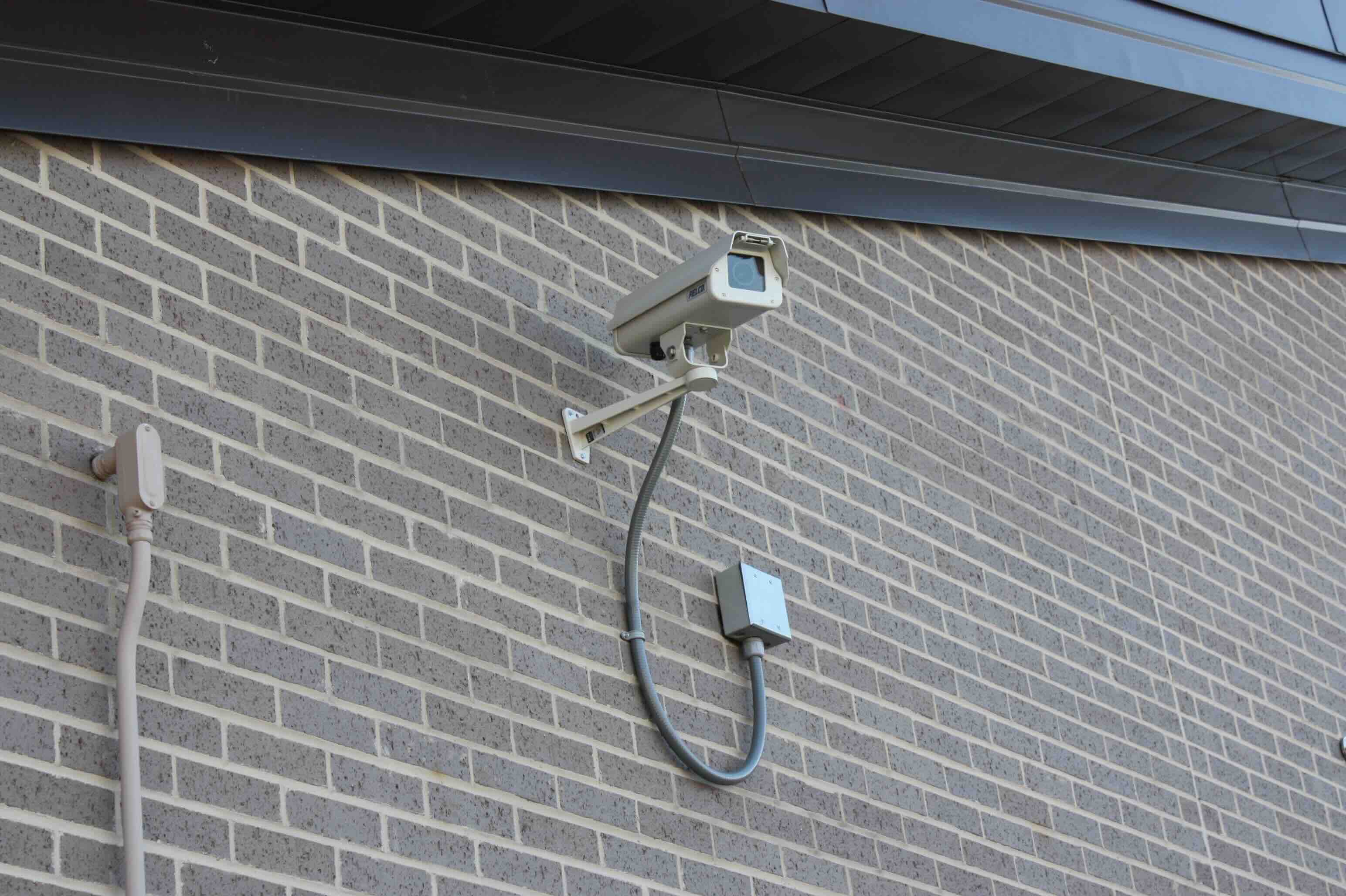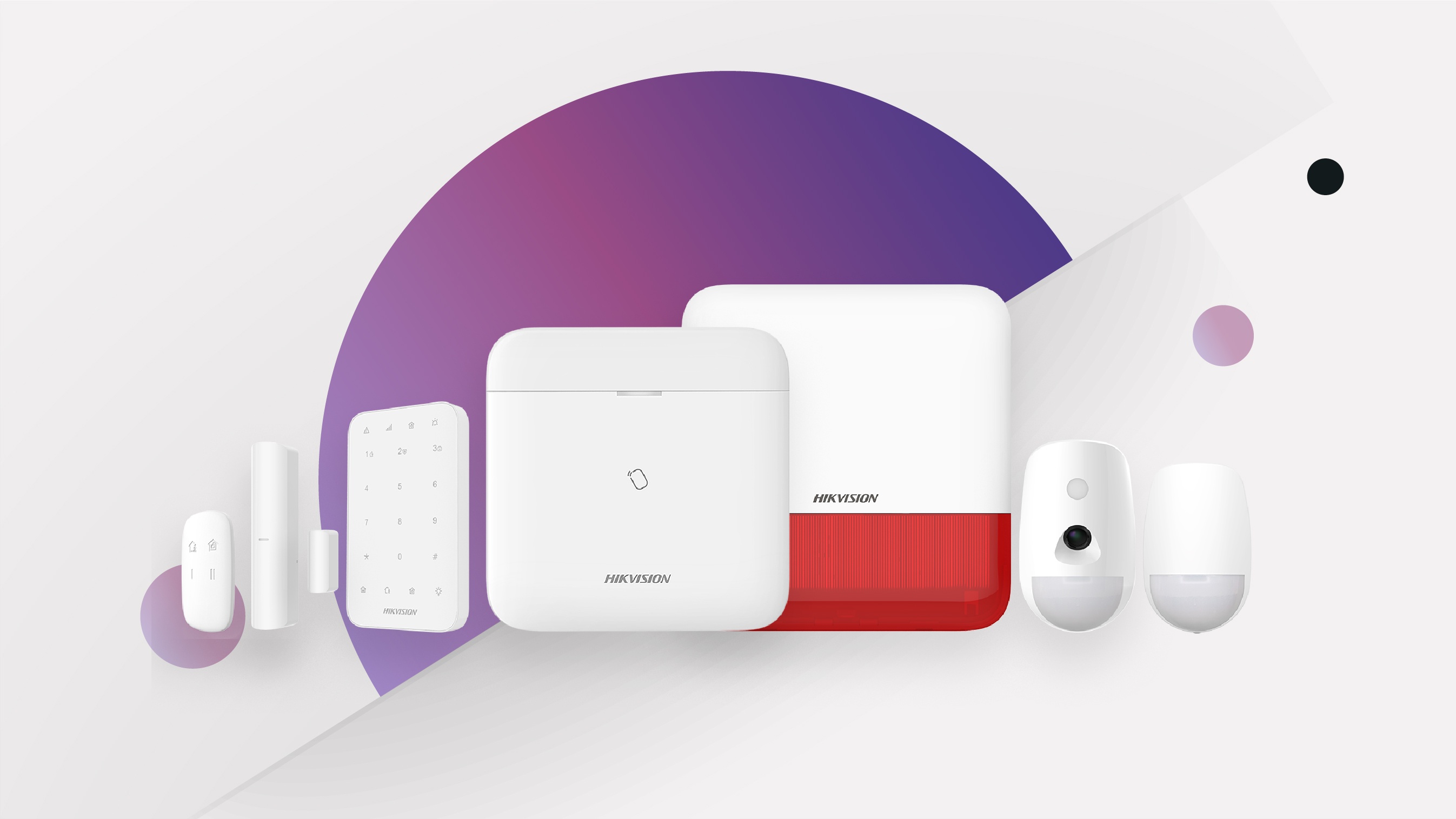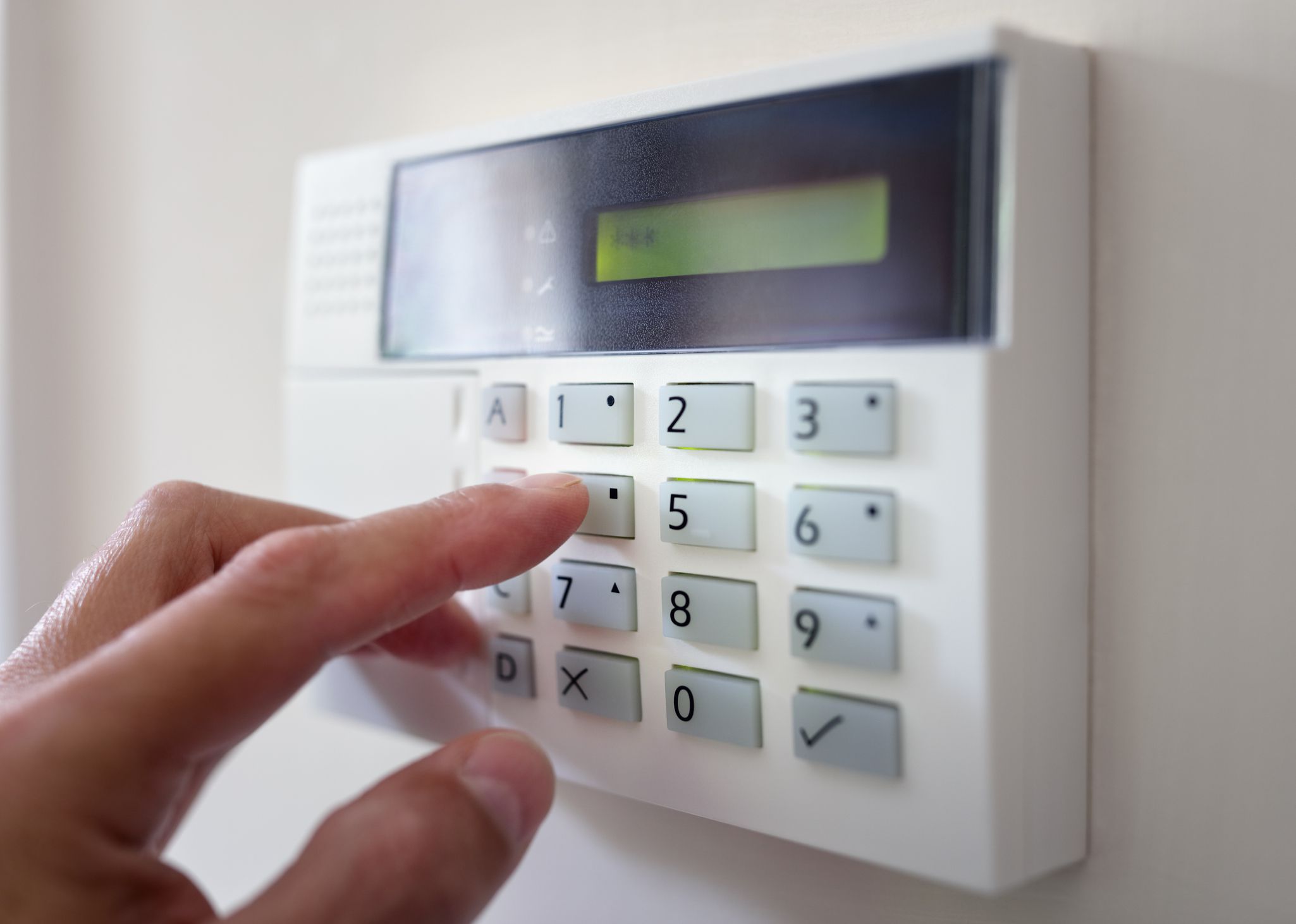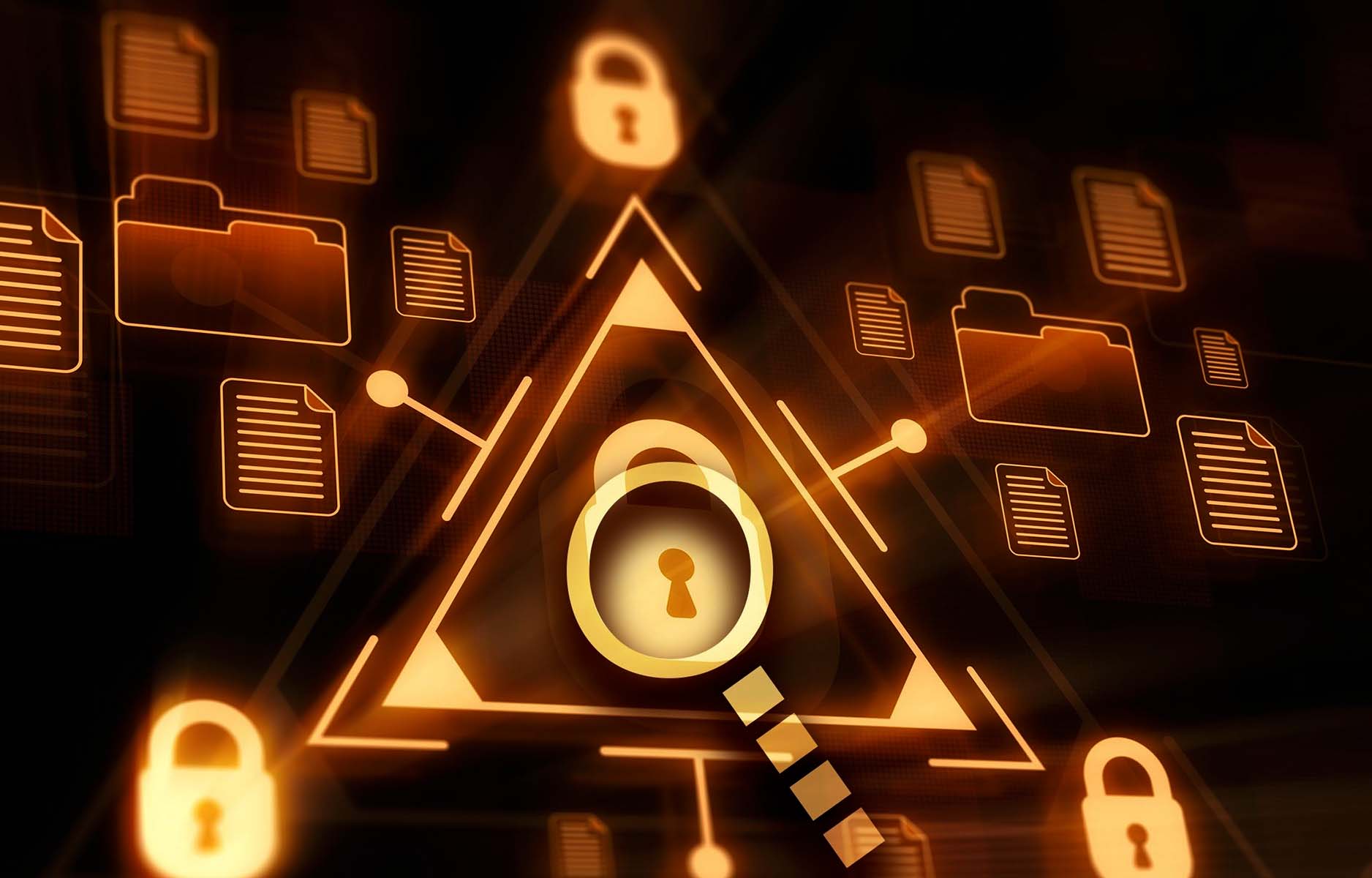Home>Home Security and Surveillance>What Is Not A Fundamental Component Of An Alarm In An Intrusion Detection System


Home Security and Surveillance
What Is Not A Fundamental Component Of An Alarm In An Intrusion Detection System
Modified: March 6, 2024
Learn about the key components of an intrusion detection system and why home security and surveillance is not considered a fundamental element. Protect your home with effective alarm systems.
(Many of the links in this article redirect to a specific reviewed product. Your purchase of these products through affiliate links helps to generate commission for Storables.com, at no extra cost. Learn more)
Introduction
Home security and surveillance have become essential aspects of modern-day living. With the rise in crime rates and the need for a safe and secure living environment, homeowners are increasingly turning to intrusion detection systems to protect their properties. These systems consist of various components that work together to detect and alert homeowners of any unauthorized entry or suspicious activities.
In this article, we will explore the fundamental components of an alarm in an intrusion detection system. We will also discuss the non-fundamental components that are important but not directly involved in the alarm mechanism. Understanding the distinction between these components is crucial for homeowners to make informed decisions about their home security needs.
Key Takeaways:
- Intrusion detection systems have fundamental components like alarms, sensors, and data analysis for detecting threats. Non-fundamental components, such as user interfaces and reporting, enhance usability and customization.
- Understanding the difference between fundamental and non-fundamental components helps homeowners choose a security system that balances core functionality with personalization and maintenance needs.
Background
Home security has always been a top priority for homeowners. Traditionally, people relied on locks, gates, and security guards to protect their properties. However, with advancements in technology, the field of home security has undergone a notable transformation. Intrusion detection systems have emerged as a reliable and efficient solution, offering homeowners enhanced peace of mind.
An intrusion detection system consists of various components that work together to detect and prevent unauthorized access to a property. These systems rely on sensors, analysis algorithms, and alert mechanisms to provide real-time monitoring and instant notifications. By detecting potential intrusions, homeowners can take timely actions to protect their property and loved ones.
With the advancements in sensor technology, intrusion detection systems have become more sophisticated and accurate. Nowadays, there are various types of sensors available, including motion sensors, door/window sensors, glass break sensors, and more. These sensors are strategically placed around the property to detect any unusual activities or breaches.
Additionally, the data collected by these sensors is processed and analyzed using advanced algorithms. These algorithms can differentiate between normal activities and potential threats, allowing the system to trigger an alarm only when necessary. This intelligent analysis not only reduces false alarms but also improves the overall efficiency of the system.
Furthermore, advancements in communication technology have revolutionized the way intrusion detection systems operate. These systems can now send instant notifications to homeowners via various means, such as mobile apps, emails, or SMS. This ensures that homeowners are immediately informed about any suspicious activity, no matter where they are.
While the concept of intrusion detection systems is widely understood, it is important to distinguish between the fundamental components of an alarm and the non-fundamental components that play supporting roles in the system. Understanding this distinction will enable homeowners to make informed decisions when selecting an intrusion detection system that suits their specific needs.
Components of an Intrusion Detection System
An intrusion detection system consists of various components that work together to provide comprehensive security. These components can be categorized into two main types: fundamental components and non-fundamental components. The fundamental components are directly involved in the alarm mechanism, while the non-fundamental components provide additional functionalities and support to the system.
Let’s delve into each of these components in more detail:
1. Alarm Mechanism: The alarm mechanism is the core component of an intrusion detection system. It is responsible for triggering an alert in case of any intrusion or suspicious activity. The alarm can be in the form of a loud siren, flashing lights, or a notification sent to the homeowner’s mobile device.
2. Sensor Devices: Sensors are crucial components that detect and monitor the environment for any signs of intrusion. They are strategically placed in and around the property and can include motion sensors, door/window sensors, glass break sensors, and more. These sensors capture data related to movement, vibrations, or changes in the environment, which is then analyzed by the system.
3. Data Analysis Algorithms: The data collected by the sensors is processed and analyzed using advanced algorithms. These algorithms have the ability to identify patterns, distinguish between normal activities and suspicious behavior, and make intelligent decisions about triggering the alarm. By minimizing false alarms, these algorithms improve the system’s reliability and effectiveness.
4. Alert Notifications: Once an intrusion is detected, the system sends alert notifications to the homeowner or a designated authority. This can be done through various means, such as mobile apps, email, SMS, or even a central monitoring station. These instant notifications ensure that the homeowner is immediately informed about any potential threat, allowing them to take appropriate action.
While these fundamental components form the backbone of an intrusion detection system, there are also non-fundamental components that provide additional functionalities and support:
1. User Interface: The user interface allows homeowners to interact with the intrusion detection system. This can be through a control panel, a mobile app, or a web-based interface. The user interface enables homeowners to arm and disarm the system, view the status of sensors, and access system logs.
2. Configuration Settings: Configuration settings allow homeowners to customize the behavior of the intrusion detection system. They can set preferences for sensor sensitivity, alarm duration, and notification preferences. These settings ensure that the system is tailored to the homeowner’s specific requirements.
3. Reporting Functionality: Reporting functionality provides homeowners with detailed reports and logs of system activities. This can include information such as sensor activations, alarm history, and maintenance schedules. These reports help homeowners track system performance and identify any anomalies.
4. Auditing Capabilities: Auditing capabilities ensure that all system activities are logged and can be reviewed if needed. This provides homeowners with a record of system events and can be useful in investigating any issues or false alarms.
By understanding the different components of an intrusion detection system, homeowners can make informed choices when selecting a system that fits their security needs. While the fundamental components are crucial for effective intrusion detection, the non-fundamental components provide additional functionalities to enhance the overall user experience.
Definition of a Fundamental Component
A fundamental component of an intrusion detection system can be defined as a critical element that is directly involved in the alarm mechanism. These components are essential for the detection and alerting of any intrusion or suspicious activity. They form the core functionality of the system and play a crucial role in ensuring the security of a property.
Fundamental components can include the alarm mechanism itself, sensor devices, data analysis algorithms, and alert notifications. These components work together to detect and respond to potential threats in real-time.
1. Alarm Mechanism: The alarm mechanism is the primary fundamental component of an intrusion detection system. It is responsible for triggering an alert or alarm when an intrusion or suspicious activity is detected. This can be in the form of a loud siren, flashing lights, or a notification sent to the homeowner’s mobile device. The alarm mechanism alerts the homeowner or designated authorities about a possible threat, enabling immediate action to be taken.
2. Sensor Devices: Sensor devices are another fundamental component of an intrusion detection system. These devices detect and monitor the environment for any signs of intrusion. They can include motion sensors, door/window sensors, glass break sensors, and more. Sensor devices capture data related to movement, vibrations, or changes in the environment, which is then analyzed by the system to determine if there is a potential threat.
3. Data Analysis Algorithms: Data analysis algorithms are essential for processing and analyzing the data collected by the sensor devices. These algorithms play a crucial role in distinguishing between normal activities and suspicious behavior. They analyze the sensor data in real-time, identifying patterns and making intelligent decisions about triggering the alarm. By minimizing false alarms and accurately identifying potential threats, data analysis algorithms improve the effectiveness and reliability of the system.
4. Alert Notifications: Alert notifications are an integral part of the fundamental components of an intrusion detection system. Once an intrusion or suspicious activity is detected, the system sends instant notifications to the homeowner or designated authorities. This can be through mobile apps, emails, SMS, or a central monitoring station. Alert notifications ensure that the homeowner is immediately informed about any potential threat, allowing them to take appropriate action promptly.
These fundamental components are the key building blocks of an intrusion detection system, providing the necessary functionality to detect, respond, and mitigate security threats. They work together seamlessly to protect a property and provide homeowners with peace of mind knowing that their premises are secure and monitored.
A fundamental component of an alarm in an intrusion detection system is the ability to detect and alert for unauthorized access or security breaches.
Examples of Fundamental Components
Fundamental components are the key elements that are directly involved in the alarm mechanism of an intrusion detection system. These components play a crucial role in detecting and alerting homeowners of potential intrusions or suspicious activities. Let’s explore some examples of fundamental components in more detail:
- Alarm Mechanism: The alarm mechanism is the primary component that triggers an alert when an intrusion is detected. It can be in the form of a loud siren, flashing lights, or a notification sent to the homeowner’s mobile device. The alarm mechanism creates a sense of urgency and alerts the homeowner or designated authorities to take immediate action.
- Sensor Devices: Sensor devices are essential components that detect and monitor the environment for any signs of intrusion. These devices capture data related to movement, vibrations, or changes in the environment. Examples of sensor devices used in intrusion detection systems include motion sensors, door/window sensors, glass break sensors, and more. These sensor devices are strategically placed around the property to detect unusual activities and potential threats.
- Data Analysis Algorithms: Data analysis algorithms are critical components that process and analyze the data collected by the sensor devices. These algorithms examine the sensor data in real-time and distinguish between normal activities and suspicious behavior. By identifying patterns and anomalies, data analysis algorithms play a vital role in triggering accurate alarms and minimizing false alarms. These algorithms continuously learn and adapt to changing conditions to improve the detection accuracy of the system.
- Alert Notifications: Alert notifications are an integral part of fundamental components. Once an intrusion or suspicious activity is detected, the system sends instant notifications to the homeowner or designated authorities. These alert notifications can be delivered through various means, including mobile apps, emails, SMS, or a central monitoring station. Instant notifications ensure that homeowners are promptly informed of any potential threats, allowing them to respond swiftly and appropriately.
These fundamental components work together in harmony to detect, alert, and respond to potential security threats. The alarm mechanism triggers an alert, while the sensor devices detect any unusual activities. The data analysis algorithms analyze the collected data to determine if there is a potential threat, and the alert notifications promptly inform homeowners about the detected intrusion. By integrating these fundamental components, intrusion detection systems provide homeowners with a comprehensive security solution to protect their properties and loved ones.
Non-Fundamental Components of an Alarm
While fundamental components are directly involved in the alarm mechanism of an intrusion detection system, there are also non-fundamental components that play important supporting roles. These components enhance the functionality and usability of the system. Let’s explore some examples of non-fundamental components in more detail:
- User Interface: The user interface is a non-fundamental component that allows homeowners to interact with the intrusion detection system. It can be in the form of a control panel, a mobile app, or a web-based interface. The user interface provides homeowners with a means to arm and disarm the system, view the status of sensors, and access system logs. It enhances the user experience and allows homeowners to have control over their security system.
- Configuration Settings: Configuration settings are non-fundamental components that enable homeowners to customize the behavior of the intrusion detection system. These settings can include sensor sensitivity, alarm duration, notification preferences, and more. Configuration settings ensure that the system is tailored to the specific needs and preferences of homeowners, providing a personalized and optimized security solution.
- Reporting Functionality: Reporting functionality is another non-fundamental component that provides homeowners with detailed reports and logs of system activities. These reports can include information such as sensor activations, alarm history, maintenance schedules, and more. Reporting functionality helps homeowners track the performance of their intrusion detection system, monitor any anomalies or system issues, and make informed decisions for system maintenance and improvements.
- Auditing Capabilities: Auditing capabilities are non-fundamental components that ensure all system activities are logged and can be reviewed if needed. They provide a detailed record of system events, including sensor activations, alarm triggers, and user interactions. Auditing capabilities are important for system monitoring, troubleshooting, and auditing purposes. In case of any false alarms or system malfunctions, auditing capabilities allow homeowners to investigate and resolve the issue.
These non-fundamental components of an intrusion detection system enhance the overall functionality, usability, and accountability of the system. The user interface provides homeowners with a convenient way to interact with the system, while configuration settings allow customization to meet specific needs. Reporting functionality and auditing capabilities offer valuable insights into system activities, enabling homeowners to monitor system performance and address any issues that may arise.
While non-fundamental components may not directly trigger alarms, they play essential roles in ensuring the smooth operation and maintenance of the intrusion detection system. By incorporating both fundamental and non-fundamental components, homeowners can have a comprehensive and user-friendly security solution that meets their specific requirements.
Importance of Distinguishing Fundamental and Non-Fundamental Components
Distinguishing between the fundamental and non-fundamental components of an alarm in an intrusion detection system is crucial for homeowners. Understanding the distinction between these components helps homeowners make informed decisions when selecting a security system that meets their specific needs and preferences. Here are some key reasons why it is important to distinguish between fundamental and non-fundamental components:
- Focus on core functionality: Identifying the fundamental components allows homeowners to focus on the core functionality of the intrusion detection system. The fundamental components, such as the alarm mechanism, sensor devices, data analysis algorithms, and alert notifications, directly contribute to detecting and responding to potential threats. By understanding these essential components, homeowners can better evaluate the capabilities and effectiveness of the system in providing reliable security.
- Personalization and customization: Recognizing the non-fundamental components, such as the user interface and configuration settings, empowers homeowners to personalize and customize their security system to their specific preferences. Different users may have different requirements and preferences, and having control over the non-fundamental components allows homeowners to tailor the system to their needs. This personalization enhances usability and ensures that the system aligns with individual security preferences.
- Enhanced system usability: Understanding the non-fundamental components, such as the user interface and reporting functionality, improves the overall usability of the intrusion detection system. A well-designed user interface provides homeowners with an intuitive and easy-to-use platform for interacting with the system. Reporting functionality allows homeowners to access detailed reports and logs, aiding in system monitoring and troubleshooting. These non-fundamental components contribute to a positive user experience and facilitate efficient management of the system.
- System maintenance and performance: Recognizing the non-fundamental components, such as auditing capabilities, helps homeowners in system maintenance and performance optimization. Auditing capabilities allow homeowners to track system events, review sensor activations, and investigate any false alarms or system malfunctions. By understanding the non-fundamental components, homeowners can proactively address any issues, ensure the system remains in optimal working condition, and improve its overall performance and reliability.
By distinguishing between the fundamental and non-fundamental components, homeowners can make informed choices and select an intrusion detection system that meets their specific security needs. Understanding the core functionality and differentiating it from the supporting components allows homeowners to focus on what truly matters for their security while customizing the system to their preferences. It enhances the usability, performance, and reliability of the system, ultimately providing homeowners with peace of mind and a secure living environment.
Conclusion
Home security and surveillance systems have become essential in today’s world, and intrusion detection systems play a vital role in protecting properties and maintaining peace of mind for homeowners. Understanding the components of these systems is crucial for making informed decisions when selecting the right security solution.
In this article, we explored the fundamental and non-fundamental components of an intrusion detection system. Fundamental components, such as the alarm mechanism, sensor devices, data analysis algorithms, and alert notifications, are directly involved in the detection and response to potential threats. These components form the core functionality of the system and are essential in providing reliable security.
Non-fundamental components, including the user interface, configuration settings, reporting functionality, and auditing capabilities, play supporting roles in enhancing the system’s usability, customization, and maintenance. They empower homeowners to personalize their security systems, customize behavior, and monitor the system’s performance.
Distinguishing between these components is crucial for homeowners to understand the essential elements of an intrusion detection system. By focusing on the fundamental components, homeowners can evaluate the effectiveness and reliability of the alarm mechanism and detection capabilities of the system. Simultaneously, awareness of the non-fundamental components allows homeowners to personalize their security system and efficiently manage its operation.
Choosing the right intrusion detection system means striking a balance between the fundamental and non-fundamental components. Homeowners should prioritize the core functionality while considering their preferences for user interface, configuration settings, reporting functionality, and auditing capabilities.
In conclusion, a comprehensive understanding of the fundamental and non-fundamental components of an intrusion detection system empowers homeowners to make informed decisions regarding their home security and surveillance needs. By selecting a system that effectively combines these components, homeowners can enjoy enhanced security, peace of mind, and a secure living environment for themselves and their loved ones.
Frequently Asked Questions about What Is Not A Fundamental Component Of An Alarm In An Intrusion Detection System
Was this page helpful?
At Storables.com, we guarantee accurate and reliable information. Our content, validated by Expert Board Contributors, is crafted following stringent Editorial Policies. We're committed to providing you with well-researched, expert-backed insights for all your informational needs.














